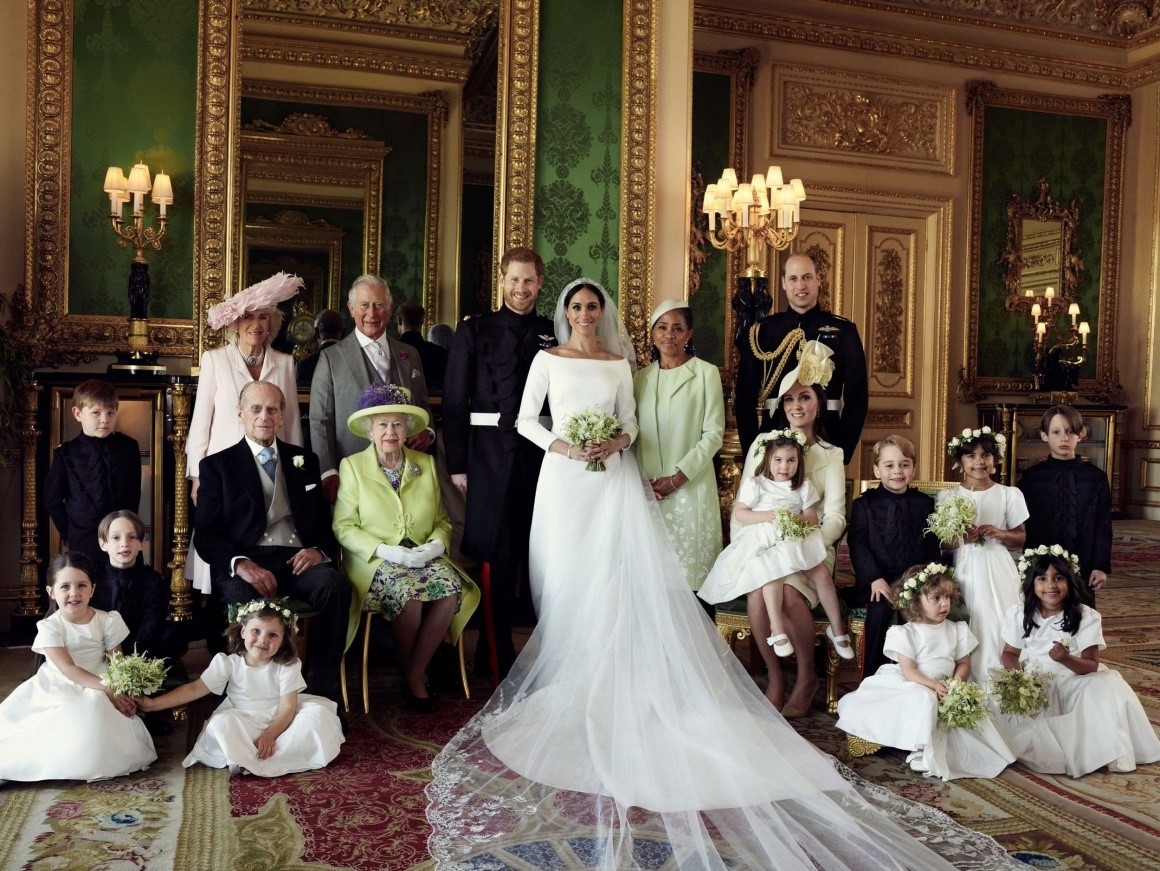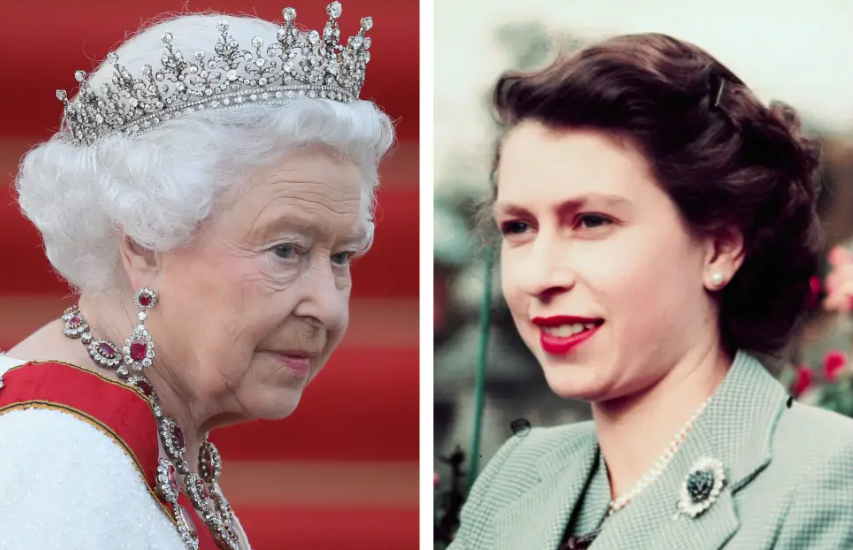By Maria Papagiannopoulou,
It is simple to forget that Queen Elizabeth II was not supposed to be queen, because of how established she is.
Elizabeth, the second, child of King George V, was born in 1926. Prior to her uncle, King Edward VIII, abdicating the monarchy in 1936 to wed divorced American socialite Wallis Simpson, Elizabeth had little hope of inheriting the kingdom. King George V passed away, and 25-year-old Elizabeth was asked to take the throne, beginning a historic reign. The Queen’s Platinum Jubilee — celebrating 70 years of her service to the British Commonwealth — began a series of festivities throughout the UK in February 2022.
Queen Elizabeth II demonstrated consistency and tenacity at the age of 96. She lost her 73-year marriage to Prince Phillip in April 2021, when he passed away at the age of 99. The Queen later claimed that the coronavirus she contracted in February 2022 left her feeling “extremely fatigued and exhausted”.
- Queen Elizabeth II’s Coronation – June 2, 1953
Elizabeth’s coronation was the first to be televised live and took place at Westminster Abbey. Out of the 36 million people that live in the UK, about 27 million watched the ceremony on television, while a further 11 million listened to it on the radio. Then, as the queen and her entourage began their long procession back to Buckingham Palace, about 3 million spectators lined the route.
- First State visit to West Germany – 1965
The queen maintained a full schedule of diplomatic obligations during a decade marked by social and political transformation, including a 10-day trip to the Federal Republic of Germany (also known as West Germany), which was the first formal visit there by a British monarch since 1913. Her visit coincided with the 20th anniversary of the conclusion of World War II and served as a symbol of the two nations’ reconciliation as well as recognition of Germany’s comeback as a major player in Europe and the international arena.
- Mining Disaster in Wales – 1966
In the South Wales community of Aberfan, an elementary school was buried on October 21, 1966, by an avalanche of mud, water, and coal mine rubble, killing 116 children and 28 adults. Prince Philip landed in Aberfan the day after the disaster, but the queen postponed her trip for more than a week out of concern that her visit might interfere with the rescue and recovery activities. Elizabeth’s former private secretary Lord Charteris and some of her close friends have said that she now regrets her choice to postpone her visit to Aberfan.
- First ‘Walkabout’ – 1970
Elizabeth defied centuries of royal custom when, with Philip and Princess Anne on a visit to Australia and New Zealand in 1970, she took a casual stroll to personally greet groups of people, rather than waving to them from a safe distance. The first “walkabout” in Sydney was suggested by Sir William Heseltine, an Australian who served as the queen’s private secretary and was the driving force behind a 1969 TV documentary featuring the royal family, which attracted a global audience of about 40 million people. Walkabouts are now common practice for British royals both at home and abroad.

- Silver Jubilee – 1977
To formally commemorate her 25th year as monarch, Elizabeth and Philip took the Gold State Coach from Buckingham Palace to St. Paul’s Cathedral on June 7. The queen reaffirmed her earlier promise to devote her life to service while donning a bright pink dress and a bonnet decorated with 25 fabric bells. She said, “Although that commitment was made in my salad days when I was green in judgment, I do not regret nor recant one word of it”.
- The 1981 wedding of Prince Charles and Lady Diana Spencer
On July 29, 1981, Prince Charles, Elizabeth’s eldest son, wed Lady Diana Spencer in St. Paul’s Cathedral in front of an estimated 750 million viewers in 74 nations. The young “Shy Di” and the heir to the British throne’s infatuation had garnered a lot of media attention, and their extravagant weddings were dubbed the “wedding of the century”. While Diana won the public’s love, her marriage to Charles (and her connection to the royal family) was fraught from the start.
- Visit to China – 1986
Prime Minister Margaret Thatcher’s administration decided to hand back control of Hong Kong to China starting on July 1, 1997, in late 1984. Elizabeth visited the Terracotta Warriors in Xi’an, the Great Wall in Beijing, and other locations in 1986, making her the first British queen to travel to the Chinese mainland. For the media, Philip’s typical (and occasionally racist) gaffes—like calling Beijing “ghastly” and warning a group of British students they would have “slitty eyes” if they stayed in China for too long—overshadowed the diplomatic significance of the queen’s visit.
- ‘Annus Horribilis’ – 1992
As their relationship continued to deteriorate, Charles and Diana decided to divorce in 1992. While Anne divorced her husband, Mark Phillips, Prince Andrew, the second son of the queen, and his wife, Sarah Ferguson, also went their separate ways. Late that year, Windsor Castle experienced a fire that resulted in the destruction of almost 100 rooms. 1992 “has turned out to be an ‘Annus Horribilis’”, or “a horrific year”, Queen Elizabeth said in a speech marking the 40th anniversary of her accession.
- Response to Princess Diana’s death – 1997
After Charles and Diana’s divorce in 1996, and particularly after Diana’s passing in a car accident in Paris the following summer, there was an increase in public criticism of the royal family. The queen first stayed at her home at Balmoral, Scotland, and refused to speak to the grieving country or allow the flag to fly at half-mast over Buckingham Palace.
She immediately changed her mind about the flag at the prompting of her advisors, traveled back to London to meet throngs of mourners, and gave a rare, televised speech to a country reeling from the loss of the “People’s Princess”.

- Golden Jubilee – 2002
When Princess Margaret, the queen’s younger sister, and their mother passed away within a few weeks of one another, the celebration of the queen’s 50th year on the throne was overshadowed. Elizabeth traveled more than 40,000 miles that year as the first British monarch to mark a Golden Jubilee since Queen Victoria. Her travels included stops in the Caribbean, Australia, New Zealand, and Canada. Additionally, she traveled to 70 towns and cities across 50 counties in the United Kingdom.
The beginning of Elizabeth’s second half-century as monarch coincided with the beginning of better relations between Britain and its royal family than during the turbulent 1990s: In 2005, the majority of the British public supported Charles’ marriage to his longtime girlfriend, Camilla Parker-Bowles.
- Visit to Republic of Ireland – 2011
Elizabeth and Philip traveled to the Republic of Ireland in May 2011 at President Mary McAleese’s invitation. The queen had frequented Northern Ireland during her reign, but this was the first visit by a British monarch to the Republic of Ireland in a century. It was generally hailed as the start of a new age of friendship during Elizabeth’s visit, during which she conveyed her “sincere thoughts and great concern” for the victims of the tumultuous Anglo-Irish past.
- Birth of Prince George – 2013
The first child of Prince William and the former Kate Middleton, who wed in 2011, Prince George Alexander Louis of Cambridge, became the queen’s new great-grandson in July 2013. George is viewed as a likely candidate to become king at some point because he is third in line of succession after his father and grandfather. Three generations of direct heirs to the British monarchy were present at the same time for the first time since Queen Victoria’s reign with his birth.

- Wedding of Prince Harry and Meghan Markle in 2018
The wedding of Prince Harry to Meghan Markle, a divorced, multiracial American actress, may have been the most emblematic event of the modernizing monarchy during Elizabeth’s reign. The couple’s relationship with the British media and the rest of the royal family grew more contentious after their marriage, despite the queen apparently giving her rapid ascent to the union. The Duke and Duchess of Sussex declared in 2020 that they were resigning from their position as senior royals. Their son, Archie, was born in 2019, and they later relocated to Markle’s native Southern California.
- Prince Philip’s death – 2021
Elizabeth’s 73-year marriage to Prince Philip ended on April 9, 2021, when he passed away at the age of 99. The longest-running romance in British royal history started soon before World War II, when Princess Elizabeth, then Princess Elizabeth’s family’s third cousin, was visiting the Britannia Royal Naval College in Dartmouth, where 18-year-old Prince Philip of Greece was studying. Following the couple’s Westminster Abbey wedding on November 14, 1947, King George VI appointed Philip as Duke of Edinburgh. Prince Philip assisted his wife in carrying out her royal responsibilities for more than 50 years while also assuming a demanding load of tasks of his own. The funeral for Philip took place on April 17, 2021. Just 30 visitors were permitted to attend due to coronavirus limitations.
- Platinum Jubilee – 2022
England will start a year-long commemoration of Queen Elizabeth II’s 70 years as monarch in February 2022. A military parade honoring the 96-year-old king, whose birthday was on April 21, was held on June 2 and featured 1,400 soldiers wearing bearskin hats, musicians, and 240 horses. There was also a flyover by the Royal Air Force and an 82-gun salute. More than 30 of Elizabeth’s favorite dog breed, corgis, were even “marching” in a procession in one area of London. Corgis are a short-legged breed.
Four generations of the queen’s heirs joined her on the balcony of Buckingham Palace as she observed the pageantry.
References
- Queen Elizabeth, people.com, Available here
- Elizabeth II, britannica.com, Available here
- Elizabeth II, wikipedia.org, Available here




